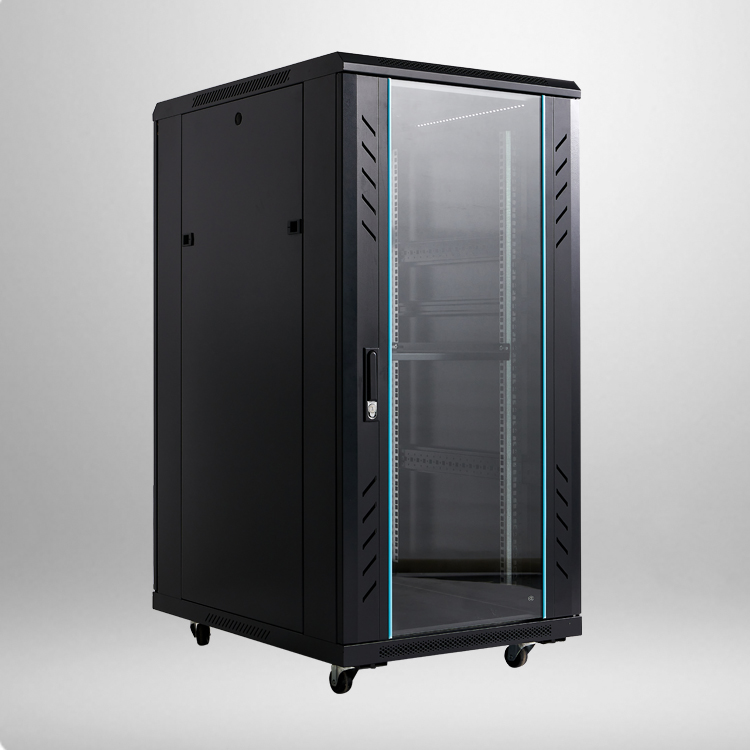
A computer rack is an essential piece of equipment in data centers or server rooms that allows for efficient storage and organization of computer systems and networking equipment. Here are the key features of a computer rack for efficient storage:
- Size and Dimension: Computer racks come in various sizes and dimensions to accommodate different types and quantities of equipment. They are typically measured in units (U), with each unit representing 1.75 inches (44.45 mm) in height. The most common rack sizes are 42U and 48U, providing ample space for servers, switches, and other equipment.
- Mounting Rails: Computer racks have adjustable mounting rails that can be easily moved horizontally to customize the arrangement of equipment. These mounting rails should be sturdy and provide secure support for the weight of the devices being installed.
- Cable Management: Effective cable management is crucial to ensure tidy and organized racks. Computer racks often come with cable management options, such as cable trays, cable rings, or ducts to route and secure cables. Proper cable management reduces the risk of cable damage, improves airflow, and facilitates easier maintenance and troubleshooting.
- Ventilation and Cooling: Computers generate heat, and excessive heat can cause equipment failure. To maintain a suitable environment for the equipment, computer racks feature vents or perforated doors that promote air circulation. Additionally, racks may have built-in fans or provisions for installing cooling units like air conditioners or vent fans to ensure efficient cooling and prevent overheating.
- Security: Computer racks may provide various security features to safeguard the equipment from unauthorized access. These can include lockable doors, side panels, or removable panels that restrict physical access to the equipment. Additionally, racks may provide options for installing security cameras or sensors to monitor the rack’s environment and detect any unauthorized activity.
- Rack PDU: Power Distribution Units (PDUs) are often integrated into computer racks to organize the power supply. These PDUs distribute power to devices mounted in the rack while providing surge protection and overload prevention. Rack PDUs can have varying numbers of outlets and may include features such as remote monitoring and power metering.
- Mobility and Accessibility: Computer racks may have wheels or casters attached to their base to allow for easy movement, especially in cases where equipment needs to be relocated frequently. Some racks feature a removable side panel for quick access to the devices within without having to remove the entire rack.
- Space Optimization: Computer racks are designed to maximize space utilization and density. They typically have a compact footprint, allowing for more equipment to be stored in a limited area. Additionally, racks may offer convenient configurations for equipment mounting, such as vertical blade servers or zero-U options that utilize the space between existing equipment.
- Rack Weight Capacity: Different equipment can vary significantly in weight, so it is crucial for a computer rack to have a specified weight capacity. The weight capacity should be suitable for the type of equipment being installed to ensure stability and prevent any potential damage or accidents.
- Modular Design: Many computer racks have a modular design that allows for easy customization and expansion. This means that additional components or accessories, such as shelves, drawers, or keyboard trays, can be added to adapt to changing needs and requirements.


